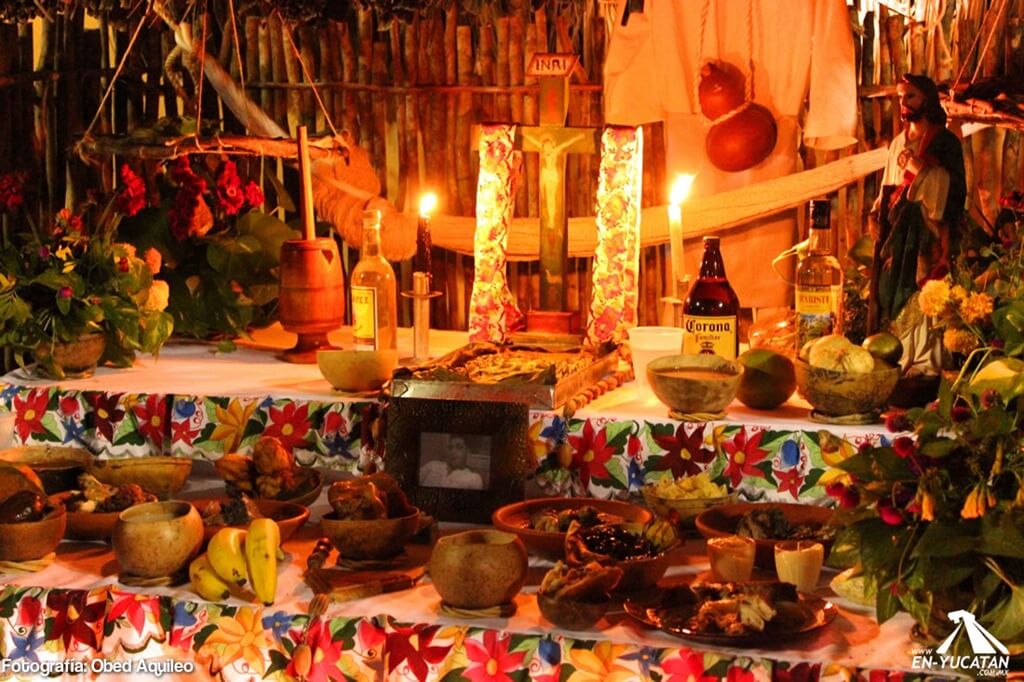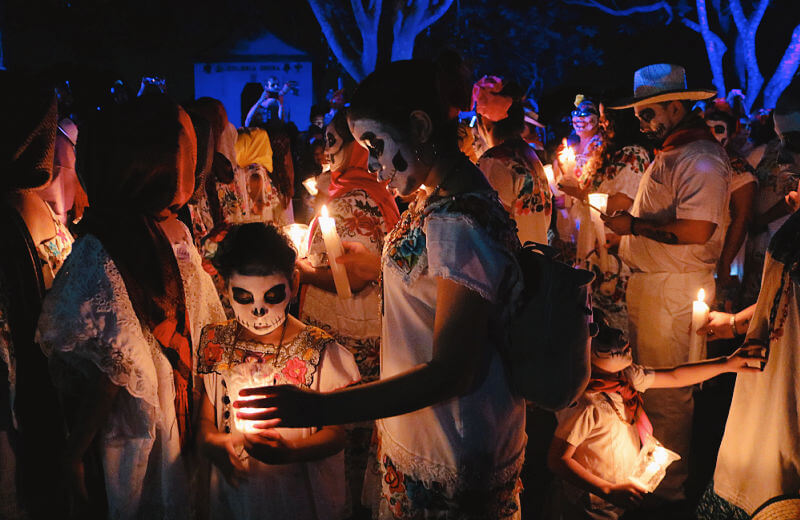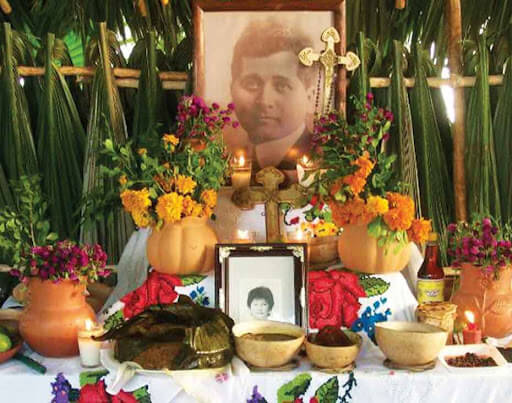The very famous Day of the Death is one of the most important festivities in Mexico. This celebration is known all throughout the world. It is part of the country's culture and traditions. And it's celebrated big-time with music, food, colorful decorations and a lot of mystery...

The Day of the Dead is a celebrated tradition for the ones that have left us. People celebrate their lives and deaths through offerings, in which they believe the souls come back home to taste their favorite food and greet their loved ones. Each 1st and 2nd of November, Mexican homes prepare themselves to welcome the spirits and celebrate.
Hanal Pixan is the name for the festivities which take place in the Yucatan which are similar to the Day of the Dead celebrations throughout Mexico. However, there are some Maya additions to the 3-day holiday which are specific to the peninsula and reflect the history and culture of the Maya people. In the Maya language, Hanal Pixan translates as ‘food of souls’, and special dishes are prepared for the arrival of the spirits of deceased family members who return on these days to visit their families.
On October 1st, traditionally the souls of children who have died will be remembered with offerings such as candy and toys while on November 1st, the souls of deceased adults return and are honored with different offerings such as food and drinks and their favorite items. Finally, on November 2nd, there is a mass in which family members pray for the souls of the dead and for their safe return to their resting places.
On the day of the deceased children, the altar is decorated with an embroidered tablecloth in cheerful tones, on which are placed, in additional to food, sweets, and toys, and is decorated with xpujuc flowers (of the wild type and yellow color), xtés in red and virginias.
These viands spend the whole night of November 1 to 2, in those small altars, under the trees. And when the souls of the deceased "have taken the grace", the relatives of the deceased eat the mucbipollos and the pibinales, and drink the atole and the balché.
A week later, the bix (ochovario del día de finados, it is also said of the meeting or party that takes place eight days after some event) or octava, which is a kind of repetition less complicated than the previous one. In the nights of those days, in the doors of the houses and in the albarradas they are lighted rows of candles so that the souls see their way when coming and when retiring of the population at the end of the finados.
Yucatan is one of the most unique states celebrating the Day of the Dead, the altars are decorated with colorful cutout paper and cempasúchil flowers, photographs of the deceased, and their favorite food.
Traditionally, families prepare their homes by cleaning and setting up an altar where they put offerings for their deceased loved ones. This includes foods and drinks, personal items and photos placed on a white tablecloth in the center of the family home. To guide the spirits to the altar they place candles and marigold flowers in a path on the ground. Family members also visit graves in the cemeteries and decorate them with flowers, incense and even art. It’s a truly colorful and beautiful way to remember lost loved ones and honor their memories.

In Yucatán, an authentic Day of the Dead dish is the PIB or Mucbipollo, a huge tamale weighing 1.5 kilos that are cooked in an underground oven and prepared with corn dough, chicken, and pork meat and beans, all wrapped in banana leaves. It is truly delicious and is one of the dishes that cannot be missing on the altar of the dead. In almost every home in the Yucatan, families will prepare this traditional Maya dish. After the spirits have visited the altar and enjoyed the smells of pib, the family gathers to enjoy this hearty and unique dish, with its smoky flavor and earthy character.
Days before this millenary tradition, people prepare themselves by buying everything necessary for the altar, oh and also the whole house must be left clean before the arrival of the souls. The altar is decorated, food, candles, and photographs are placed and the arrival of the dead is awaited.
The custom of consuming and placing on their altars Pan de Muerto (bread of the dead), which is not native to the region but came from the center of the country, is becoming more and more common among Yucatecans, who have gradually integrated it into their way of celebrating the day of the faithful departed, as well as the skull-shaped candies with the name of a person.

The ofrendas (offerings) can be made inside the home, or many people choose to make the offering directly in the cemetery. Another place that fills with colors during these dates, since many families make their altars there for their loved ones.
Not only in the cemetery and in the homes celebrated, but also in the streets there are different festivals with music, exquisite gastronomy, costumes, and a lot of atmospheres.
If you visit Chichen Itza during these dates, you definitely have to go to one of this Day of the Dead performances and get to know the authentic Mexican traditions.